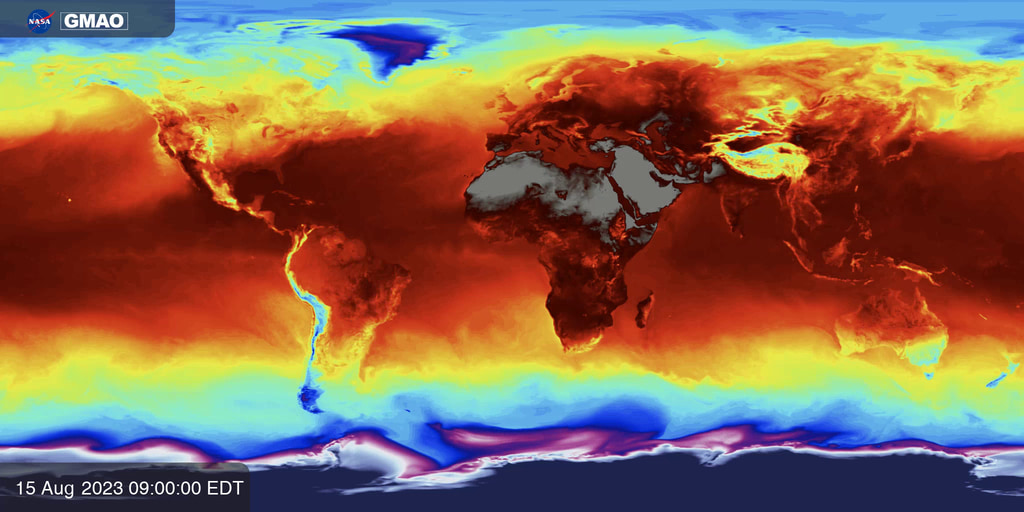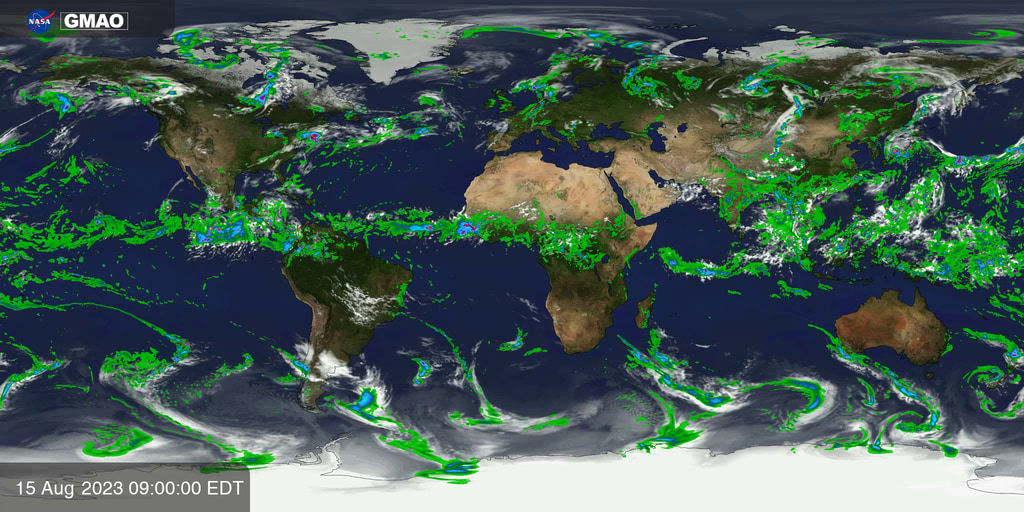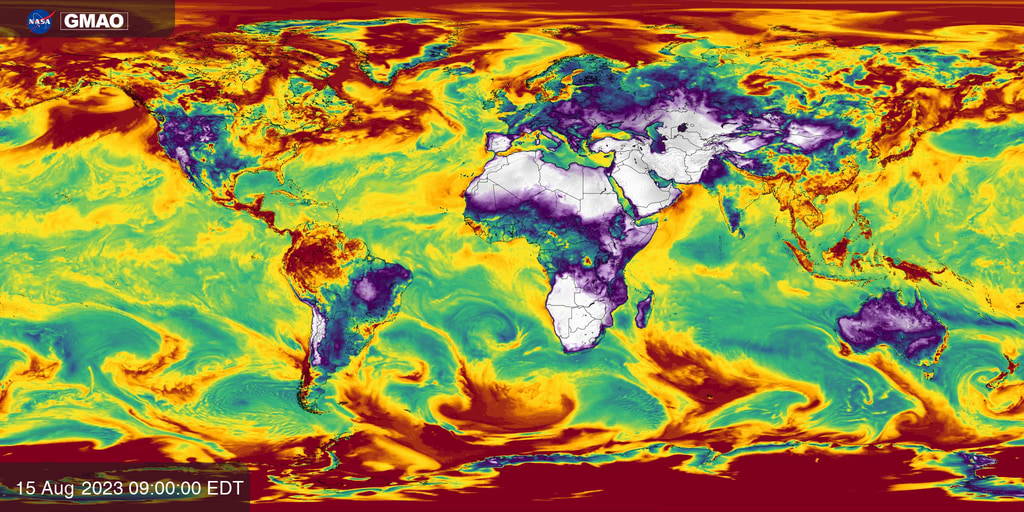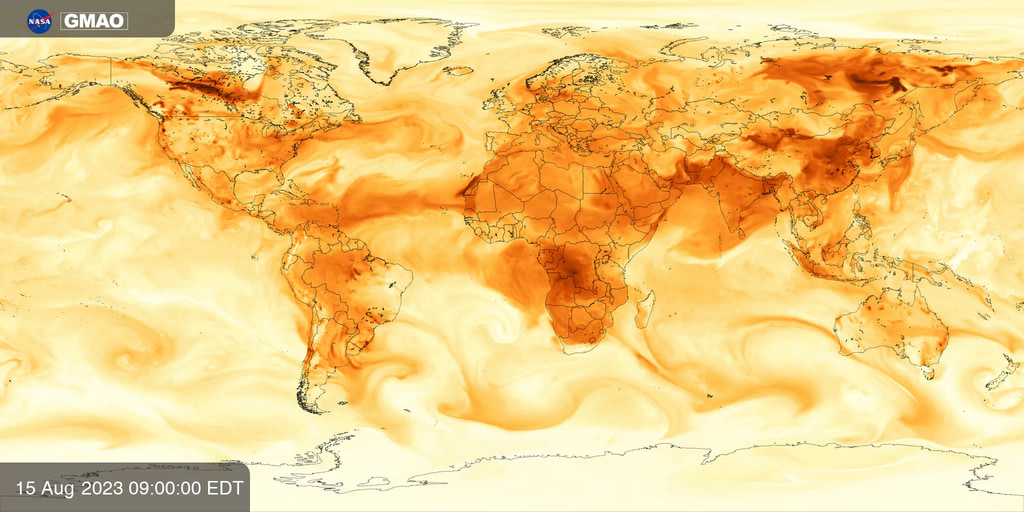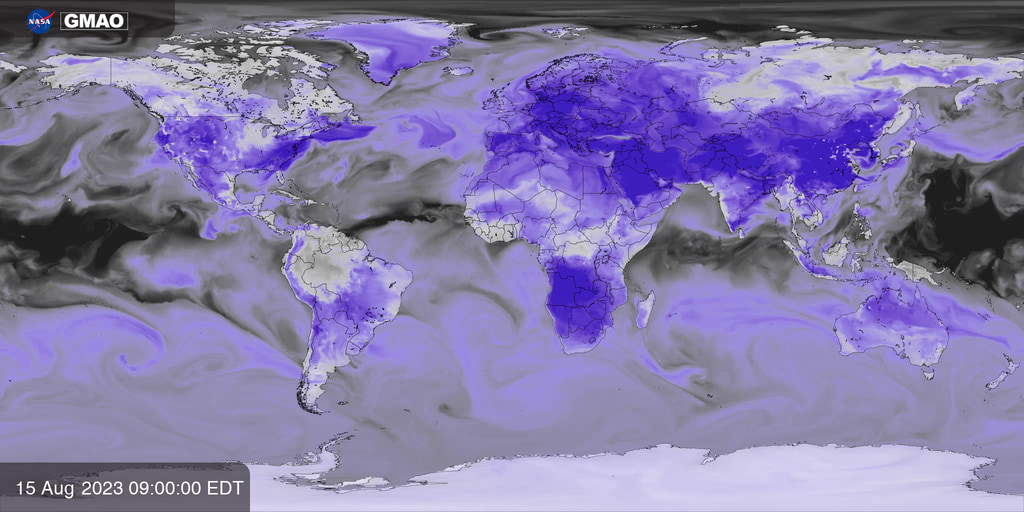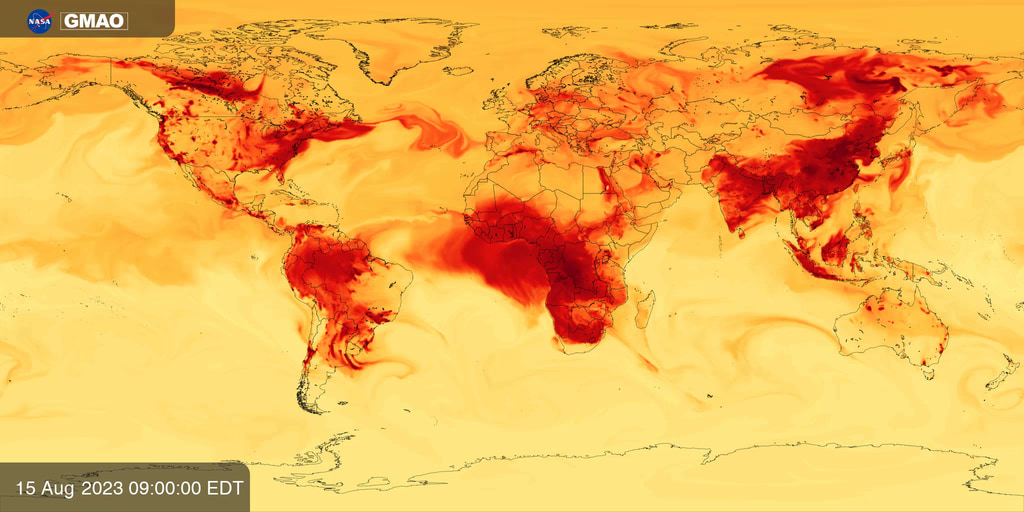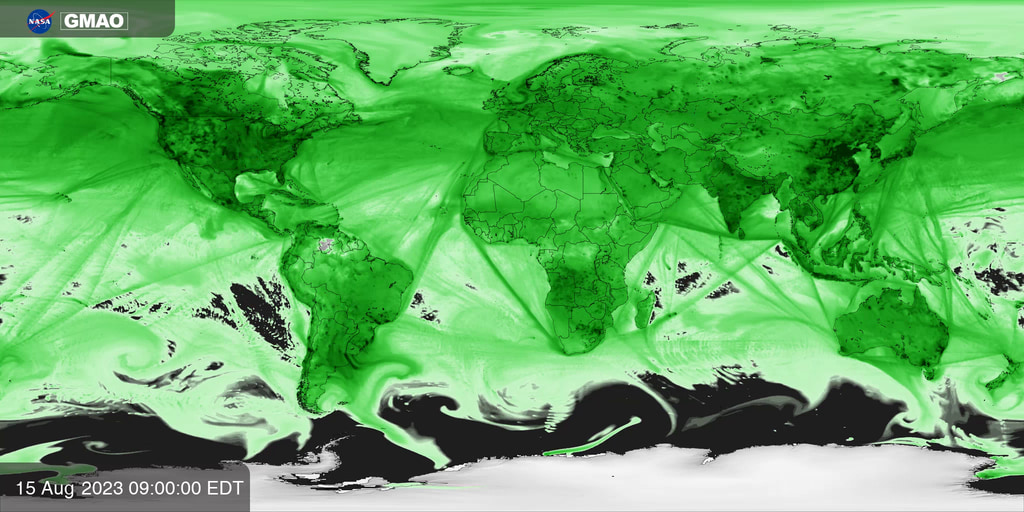GEOS-FP Near Surface Wind Speed
Near surface wind speed is calculated by sampling 3-D atmospheric fields from NASA’s GEOS-FP system 10 meters above Earth’s surface. GEOS-FP combines millions of weather observations with a predictive model to create a global best estimate of weather conditions that are used to begin a forecast.
Weather models begin their forecasts by integrating observations from ground stations, aircraft, balloons, and a growing constellation of Earth observing satellites to estimate the most realistic atmospheric state. The Goddard Earth Observing System Forward Processing (GEOS-FP) system is a research model maintained by NASA’s Global Modeling and Assimilation Office to demonstrate innovative new ways to use satellite data to improve predictions of weather, air quality, and greenhouse gases and to help NASA collect new observations of our home planet.
Near surface wind speed is calculated by sampling model fields at 10 meters (about 30 feet) above Earth’s surface. Wind speed is typically largest over ocean because surfaces are smooth and result in less friction than over land. Organized patterns reflect weather fronts and storm systems around the world. Near surface winds help scientists track the movement and severity of storms and air pollution episodes. Increasingly, these kinds of products help wind energy managers plan resources to help meet the world’s demand for energy while reducing the greenhouse gas emissions that cause climate change.
For More Information
Credits
Please give credit for this item to:
NASA’s Global Modeling and Assimilation Office
-
Visualizer
- Joseph V. Ardizzone (NASA/GSFC)
Release date
This page was originally published on Tuesday, September 26, 2023.
This page was last updated on Thursday, July 25, 2024 at 11:00 PM EDT.
Datasets used in this visualization
-
GEOS-FP
ID: 1196Documentation: Lucchesi, R., 2018: File Specification for GEOS FP. GMAO Office Note No. 4 (Version 1.2), 61 pp, available from https://gmao.gsfc.nasa.gov/pubs/docs/Lucchesi1203.pdf
This dataset can be found at: https://fluid.nccs.nasa.gov/weather/
See all pages that use this dataset
Note: While we identify the data sets used in these visualizations, we do not store any further details, nor the data sets themselves on our site.
